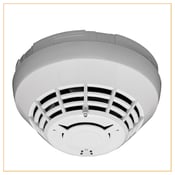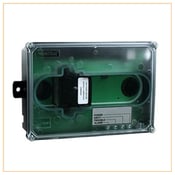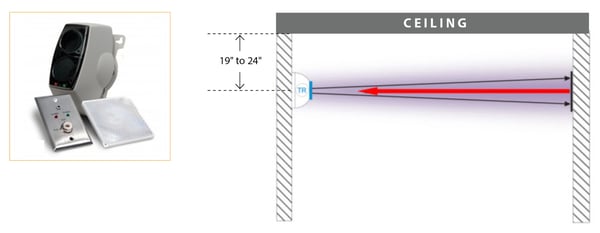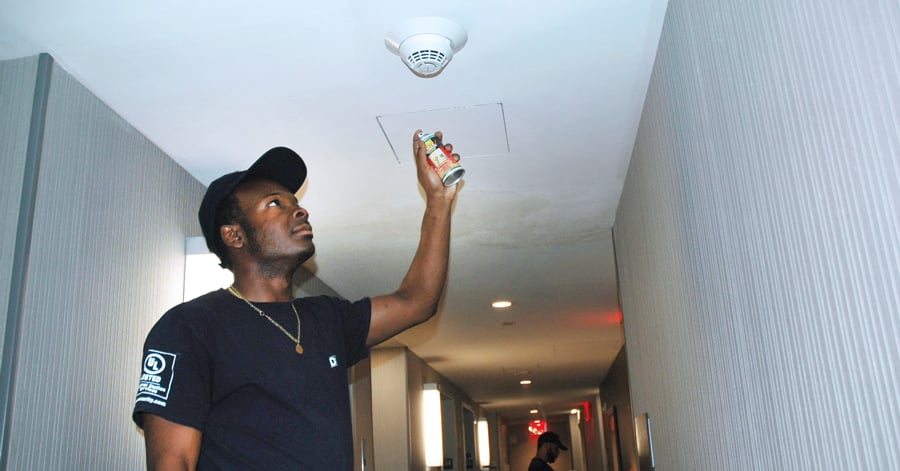Initiating Devices: Smoke Detectors, Duct Smoke Detectors, Beam Detectors
Daniel Torpey is Senior Systems Consultant at DGA Security and oversees all commercial fire system installations at DGA. He also currently serves as a member of the NYC Department of Buildings’ Fire Protection Systems Technical Committee, which assists with drafting revisions to the New York City Construction Codes. Dan’s previous industry experience includes serving on the test development committee with NICET (National Institute for Certification in Engineering Technologies) and serving as a member of the FDNY Certificate of Fitness Committee.
This article provides of smoke detectors, duct smoke detectors and beam detectors which are all fire alarm initiating devices. We'll explain what they are, how they work and where they are used. In commercial fire alarm systems, initiating devices play a critical role of detecting an active fire and dangerous level of carbon monoxide as well as monitoring the sprinkler system to ensure that it's in proper working condition.
 Smoke detectors look for the presence of smoke. The most common type used today are photoelectric smoke detectors. A photoelectric smoke detector operates by projecting a small beam of light across an internal chamber. If that beam of light becomes obscured beyond a preset threshold (a percentage of light obscuration) by smoke, dirt or other small particles, the detector will transmit an alarm signal to the Fire Alarm Control Panel (FACP).
Smoke detectors look for the presence of smoke. The most common type used today are photoelectric smoke detectors. A photoelectric smoke detector operates by projecting a small beam of light across an internal chamber. If that beam of light becomes obscured beyond a preset threshold (a percentage of light obscuration) by smoke, dirt or other small particles, the detector will transmit an alarm signal to the Fire Alarm Control Panel (FACP).
 Duct smoke detectors operate the same way as the photoelectric smoke detectors (see above). However, duct smoke detectors are designed to be mounted on the side of an air handling duct in order to sense smoke moving through an HVAC system. They have a special metal tube that constantly takes in a sampling of air moving inside the duct and pushes the air into the photoelectric chamber. The air in the photoelectric chamber circulates back into the duct via a separate exhaust tube, enabling a constant sampling of air. In most jurisdictions, duct smoke detectors activate an alarm signal to the FACP.
Duct smoke detectors operate the same way as the photoelectric smoke detectors (see above). However, duct smoke detectors are designed to be mounted on the side of an air handling duct in order to sense smoke moving through an HVAC system. They have a special metal tube that constantly takes in a sampling of air moving inside the duct and pushes the air into the photoelectric chamber. The air in the photoelectric chamber circulates back into the duct via a separate exhaust tube, enabling a constant sampling of air. In most jurisdictions, duct smoke detectors activate an alarm signal to the FACP.
Beam detectors are photoelectric smoke detectors designed to be used in large indoor spaces with high ceilings such as atria, industrial warehouses, lobbies and museums. Beam detectors work by transmitting a beam of light across the space. If this light beam is obscured beyond a preset threshold (a percentage of light obscuration) by smoke or dust particles, beam detectors transmit an alarm signal to the FACP. Beam detectors can consist of a transmitter and a receiver that are installed directly across from each other. Alternatively, beam detectors can consist of a transceiver (a transmitter/receiver combination) and a reflector that are installed directly across from each other.

Beam detectors offer some advantages over spot smoke detectors for protecting large, tall spaces. First, beam detectors cover a much wider area (330 ft. x 60 ft.) than spot smoke detectors (30 ft. x 30 ft). One beam detector can potentially replace 20+ spot smoke detectors. Second, in spaces with tall ceilings, beam detectors can be placed at a height where the smoke field is most likely to form during a fire. This is critical because smoke may not reach a very high ceiling, where spot smoke detectors are installed, due to stratification. Stratification is a phenomenon in which smoke stops rising and levels off due to temperature differences.
When activated, smoke detectors, duct smoke detectors and beam detectors will transmit an alarm signal to the FACP, which will alert the occupants to leave the premises using audible and visual alarm devices. The monitoring center will also receive the alarm signal and call the local fire department to dispatch emergency responders.
To learn more about different initiating devices, read these related articles:
Initiating Devices (Part 2) - Heat Detectors, CO Detectors and Multi-Sensor Detectors
Initiating Devices (Part 3) - Manual Pull Stations and Waterflow Switches
Initiating Devices (Part 4) - Supervisory Switches for Monitoring Automatic Fire Sprinkler Systems
Are you looking for a new fire alarm system for your commercial space? Or need to upgrade an existing one? Download this FREE eBook that explains different fire system components.




